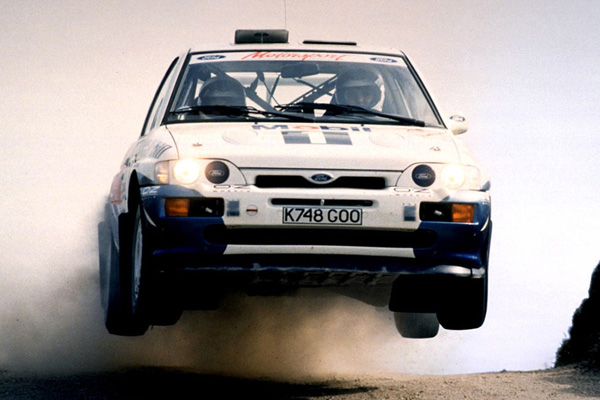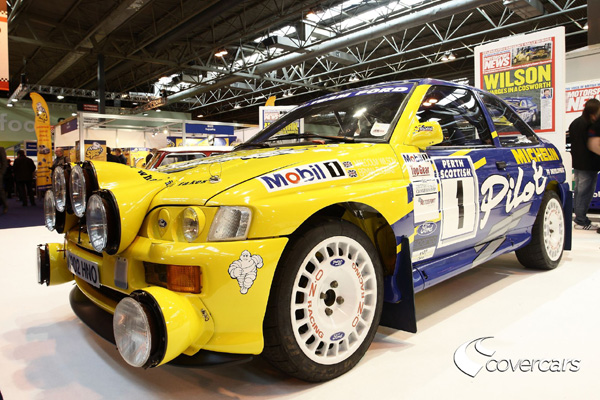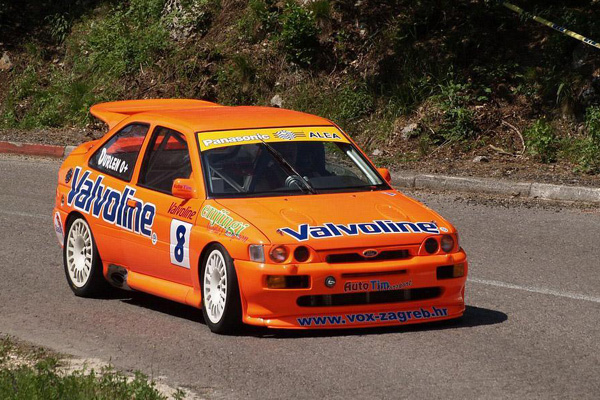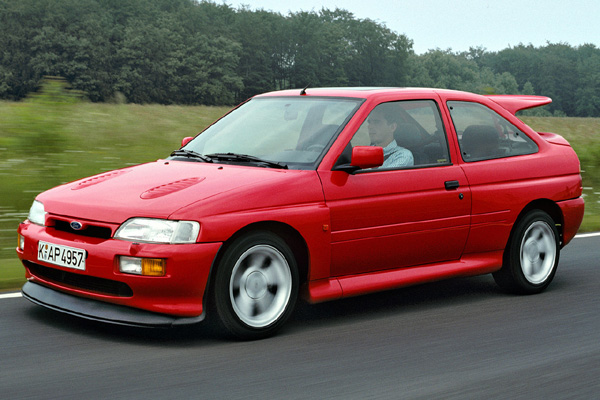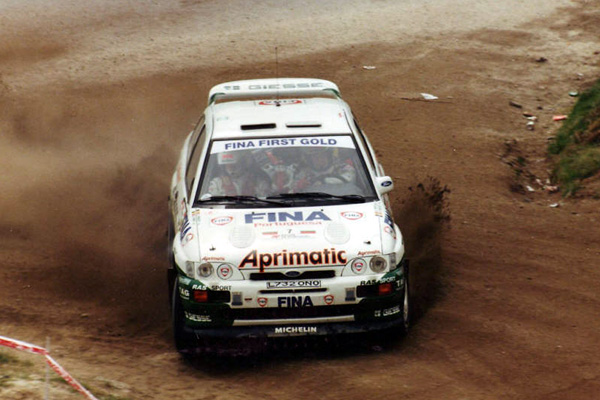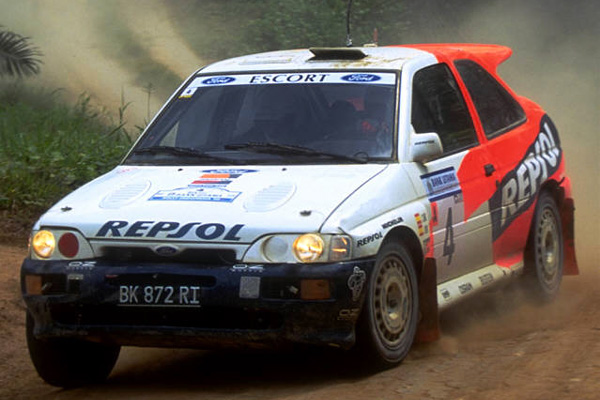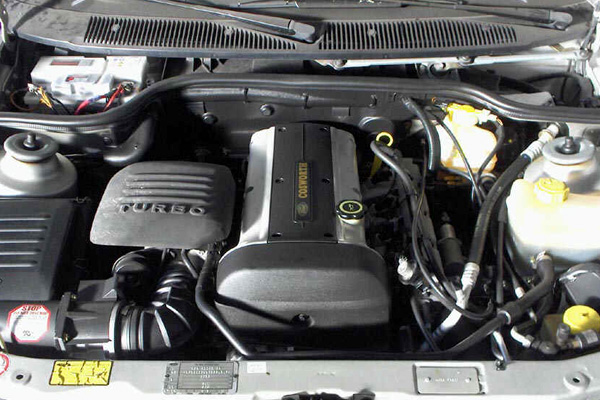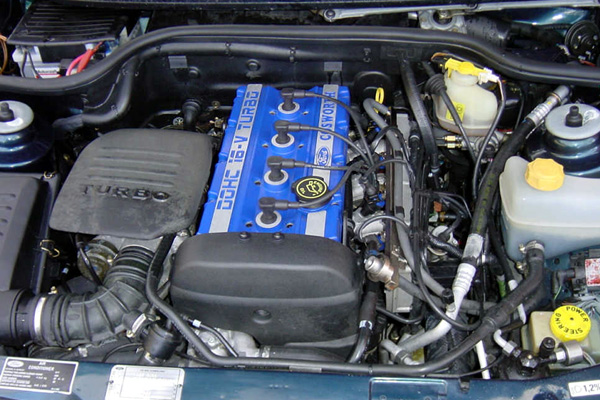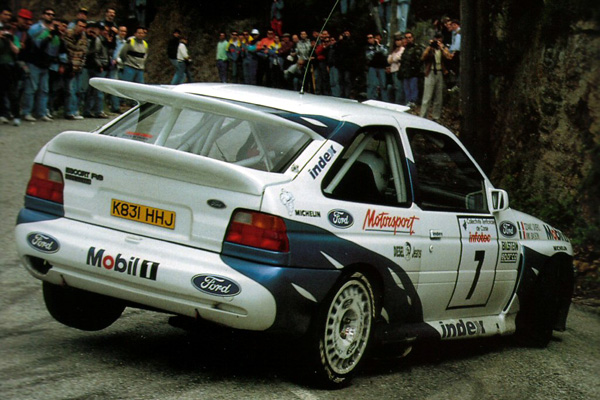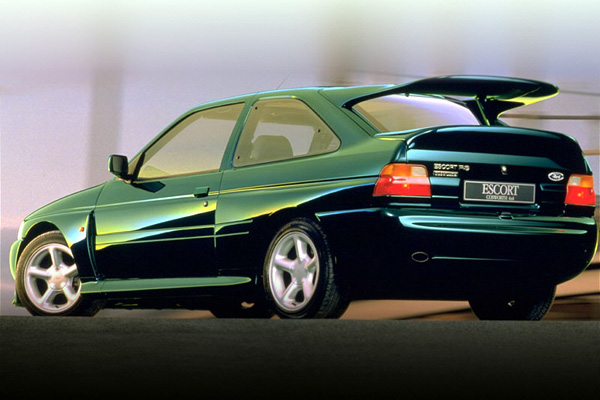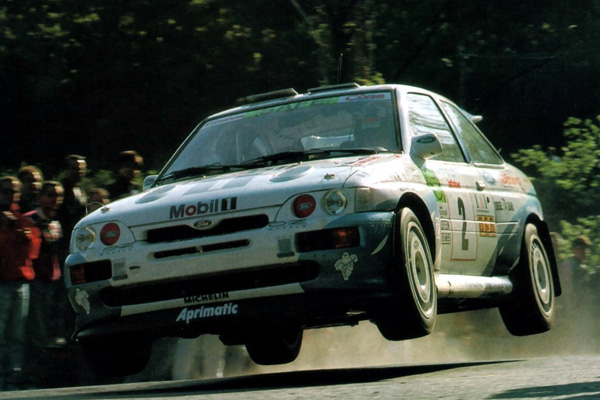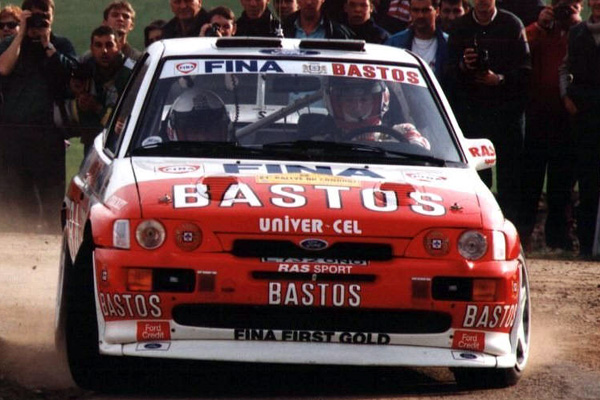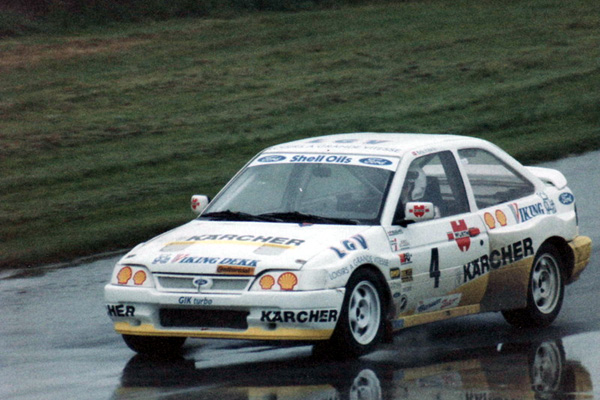Ford Rally Legend 60's- 90's
| Model | Activity | Class | BHP@RPM | Nm@RPM | Length | Width | Height | Weight | PW Ratio | Trans. | W'base |
| Cortina Mk1 GT | 62`67 | Group 2 | 120@6500 | 142@5100 | 4275 | 1587 | 1364 | 900 | 7.5 | RWD | 2476 |
| Cortina Mk1 Lotus | 63`68 | Group 2 | 140@6800 | 155@5000 | 4275 | 1587 | 1364 | 900 | 6.4 | RWD | 2476 |
| Cortina Mk2 GT | 67`68 | Group 2 | 120@6500 | 142@5100 | 4270 | 1650 | 1400 | 980 | 8.2 | RWD | 2490 |
| Cortina Mk2 Lotus | 67`69 | Group 2 | 140@6800 | 155@5000 | 4270 | 1650 | 1400 | 980 | 7.0 | RWD | 2490 |
| Escort Mk1 RS1600 TC | 68`72 | Group 4 | 140@6800 | 155@5000 | 4052 | 1670 | 1380 | 960 | 6.9 | RWD | 2400 |
| Escort Mk1 RS1600 V6 | 69`69 | Group 4 | 200@6500 | 230@5100 | 4052 | 1670 | 1380 | 1050 | 5.3 | RWD | 2400 |
| Escort Mk1 RS1600 1850 | 70`72 | Group 4 | 175@7500 | 190@5600 | 4052 | 1670 | 1380 | 1027 | 5.9 | RWD | 2400 |
| Escort Mk1 RS1600 BDA | 73`76 | Group 4 | 230@8000 | 217@6750 | 4052 | 1670 | 1380 | 960 | 4.2 | RWD | 2400 |
| Escort Mk1 1.6 L | 73`86 | Group 4 | 100@5500 | 141@3500 | 4052 | 1584 | 1384 | 910 | 9.1 | RWD | 2400 |
| Escort Mk2 RS1800 BDA | 75`84 | Group 4 | 265@8000 | 217@6750 | 4058 | 1740 | 1384 | 980 | 3.7 | RWD | 2407 |
| Escort Mk2 RS1800 BDA asphalt | 75`84 | Group 4 | 272@8000 | 237@6900 | 4058 | 1810 | 1300 | 980 | 3.6 | RWD | 2407 |
| Escort Mk2 RS2000 | 76`83 | Group 1 | 110@5500 | 164@3750 | 4150 | 1596 | 1384 | 925 | 8.4 | RWD | 2407 |
| Fiesta Mk1 S1600 | 79`81 | Group 2 | 150@7500 | 172@5500 | 3750 | 1640 | 1360 | 775 | 5.2 | FWD | 2286 |
| Cortina Mk4 3000 | 80`81 | Group 2 | 140@5000 | 178@3000 | 4340 | 1706 | 1363 | 1035 | 7.4 | RWD | 2579 |
| Escort Mk3 XR3i | 82`85 | Group A | 150@6000 | 183@4800 | 3970 | 1640 | 1384 | 920 | 6.1 | FWD | 2402 |
| Escort Mk3 RS1600i | 83`83 | Group A | 160@6000 | 193@4800 | 3970 | 1640 | 1384 | 920 | 5.8 | FWD | 2402 |
| Escort Mk3 RS Turbo | 86`90 | Group A | 210@5000 | 245@3500 | 3970 | 1640 | 1384 | 905 | 4.3 | FWD | 2402 |
| Escort Mk3 RS1700T BDT | - | Group B | 320@ | 380@ | - | - | - | 890 | 2.8 | RWD | @ |
| Escort Mk3 RS1700T Hart | - | Group B | 300@ | 241@ | - | - | - | 910 | 3.0 | RWD | @ |
| RS200 | 86`86 | Group B | 420@8000 | 500@6000 | 4000 | 1764 | 1316 | 1140 | 2.7 | 4x4 | 2530 |
| Sierra Mk1 XR4x4 | 87`89 | Group A | 220@5700 | 276@4100 | 4450 | 1716 | 1393 | 1200 | 5.5 | 4x4 | 2611 |
| Sierra Mk1 XR4x4 | 87`89 | Group N | 160@5700 | 218@3800 | 4450 | 1716 | 1393 | 1270 | 7.9 | 4x4 | 2611 |
| Sierra Mk1 Cosworth | 87`90 | Group A | 300@6500 | 408@4500 | 4450 | 1720 | 1369 | 1175 | 3.9 | RWD | 2608 |
| Sierra Mk1 Cosworth | 87`92 | Group N | 204@6000 | 276@4500 | 4450 | 1720 | 1369 | 1095 | 5.4 | RWD | 2608 |
| Sapphire Mk1 Cosworth 4x4 | 90`93 | Group N | 204@6000 | 276@4500 | 4494 | 1698 | 1369 | 1300 | 6.4 | 4x4 | 2608 |
| Sapphire Mk1 Cosworth | 90`95 | Group A | 300@6500 | 408@4500 | 4494 | 1698 | 1369 | 1190 | 4.0 | RWD | 2608 |
| Sapphire Mk1 Cosworth | 90`95 | Group N | 204@6000 | 276@4500 | 4494 | 1698 | 1369 | 1250 | 6.1 | RWD | 2608 |
| Sapphire Mk1 Cosworth 4x4 | 90`95 | Group A | 300@6500 | 408@4500 | 4494 | 1698 | 1369 | 1220 | 4.1 | 4x4 | 2608 |
| Escort Mk5 RS Cosworth | 93`98 | Group A | 300@6250 | 459@4500 | 4211 | 1734 | 1425 | 1220 | 4.1 | 4x4 | 2550 |
| Escort Mk5 RS Cosworth | 93`98 | Group N | 224@6250 | 305@3500 | 4211 | 1734 | 1425 | 1300 | 5.8 | 4x4 | 2550 |
| Escort Mk5 RS2000 | 94`97 | Group 2 | 225@7500 | 249@5000 | 4140 | 1698 | 1378 | 941 | 4.2 | FWD | 2475 |
| Escort Mk5 WRC | 97`99 | WRC | 300@5500 | 500@4000 | 4211 | 1770 | 1425 | 1230 | 4.1 | 4x4 | 2550 |
| Escort Mk5 RS2000 Maxi | 98`98 | Group 2 | 282@8500 | 255@6500 | 4140 | 1830 | 1378 | 960 | 3.4 | FWD | 2475 |
Cortina Mk1 GT
Cortina Mk1 Lotus
Cortina Mk2 GT
Cortina Mk2 Lotus
Ford Escort (Mk1) General Information
This car should actually be called Ford Escort RS1600. In many Ford models it is difficult to keep different generations apart without Ford's traditional "Mk" tag. Not so the famous rally Escorts, as Ford made a point of calling all rally versions of the Escort Mk1 the "Escort RS1600". This at first made sense, as the Mk1 started its rally life as a 1600cc. But even future versions with bigger engines always carried the RS1600 tag!The Escort Mk1 had much smaller a success story at WRC level than the Escort Mk2. But there is a reason why this Escort Mk1 turned such a huge legend. It is amazing just how much Ford played with different versions and developments on the Escort Mk1, and it is also this why the Escort Mk2 was such a success: No need to experiment, the best was long identified and proven!
But before we look into the development career of the RS1600/Mk1, as crazy as it sounds, looking at a rally purpose prototype is one of the best ways to explain the amazing spirit behind the Escort Mk1, even though that may have been not intentional by Ford! At about the same time the Escort RS1600/Mk1 debuted, Ford as well experimented with a mid engined prototype on the lines of the Lancia Stratos: the Ford GT70. But it didn't take long after the GT70's rally debut for the Ford management to realise the Escort RS1600 is just as quick and much better for the marketing. That was it: the Escort RS1600 was simple, it handled well, could take tough conditions and for all that even costly prototypes had a struggle at hand to keep up with it - and this again made the Escort attractive for privateers as well.
To the RS1600's development career and many variations, the car was choosen by Ford's Boreham works rally team as a replacement to the legendary Ford Lotus Cortina. This made perfect sense. The first version Escort Mk1 rally car was called by full name Ford Escort RS1600 TC. But this name needs some explaination. Firstly the Escort replaced the Anglia range and it is a small saloon, 1 size down on the Cortina. Smaller and lighter is always good, but this version had the exact same underpinnings of the Ford Lotus Cortina. Despite there being no hint to Lotus in the "RS1600 TC" name, this car actually had the exact Lotus engine as used in the Cortina! Slightly misleading in the name tag is that TC actually stands for Twin Cam, but Twin Cam does not automatically mean DOHC 16v. This is a rare DOHC 8v layout! Indeed in works rally trim this Lotus engine "only" delivered 140BHP, such early Escort RS1600 successes underline the efficiency and handling of this model.
As time went on the opposition became more powerful and Ford soon experimented with fitting bigger engines into the Escort Mk1. Most notable was the car YVW 591F, which was fitted with a 2.3 V6 Granada unit from Ford's shelves! However this was the only car with that engine. (ETW 882G was equipped with that V6 engine for one rally, but then returned to TC spec.) As already found on the GT70, the added power from the V6 was compromised by an increase of weight - around 100kg in this case. And in the case of the Escort the car became more front heavy, too. Later some privateers copied this or even fitted a V8 engine to their Mk1 Escort, but already from this works experiment it was perfectly clear: for overall weight and for weight balance (also effecting handling and traction) anything more than a 4-cylinder simply did not make sense for the Escort!
Then however came an interim version that should turn to major fame. There was an Escort developed especially for the London to Mexico World Cup Rally. The total distance was 27.200km and went for a large part through Africa and South America. Ford didn't need more power, but they needed an engine that would last the distance and could cope with low fuel quality and high altitudes. As a result an engine was created that was based on the 1600cc Lotus, it did not actually have much more power (the Lotus TC engine meanwhile also had increased to 160BHP), the compression ratio was taken down as well as the maximum revs and it also lost the Twin Cam layout, but for torque the displacement had been increased to 1850cc.
This event turned one of the life time magic examples how marketing works. Win on Sunday, Sell on Monday.... The London-Mexico was a massive success and immediately a road car was launched called the "Ford Escort Mexico". This 1850cc 100BHP road car was down on power to the sporty Escort Mk1 top model road car, the Escort RS2000. Yet today when people talk Escort RS2000, they mean Escort Mk2. Never mind in Mk1 form the Mexico was down on power to the RS2000, the car had "Mexico" in its name, and for the fans of sporty Fords this identified a legendary event! - The Mexico road version itself became a legend, so much so that its more powerful top version Mk1 RS2000 is forgotten.
Following on from the 1850 Mexico, it was clear Ford wanted a bigger engine in works Escorts. However the Lotus unit was on its limits. Going beyond 1850cc by increasing bore even further (increasing stroke would have demanded a complete re-design anyway) would have made the walls between cylinders so slim that there was no way such unit could be reliable with high-tune high-compression. A new engine was needed. At this time former Ford and Lotus partner engineers Mike Costin and Keith Duckworth opened their own business called Cosworth. And they came up with the BDA. BDA means nothing more simple than "Ford Belt Driven version A", but based on the configuration of Ford's own 1993cc engine, this was a purpose built DOHC 16v!
Amazingly this Cosworth BDA engine means that between 1968 & 1972, in only 4years, the Escort RS1600 (yes, even this 1993cc version was called RS1600) was upgraded from 140BHP to 230BHP! A little more fine tuning over the remaining years had the engine at 260BHP! Imagine, this is 1975, over 30years ago, and this 2000cc unit is only around 25BHP down on a modern S2000 car! Further by 1975 the BDA's continued development meant the engine was reliable. And 1975 was the debut year of the Escort Mk2 - no wonder the Mk2 could win WRC events for the next 6years without needing any new variations or evolutions!
Admittedly partly the Escort Mk1 was less successful at WRC level than the Mk2, because when the WRC was born the Escort Mk1/RS1600 had only 2 seasons left to go. But more even, like Peugeot, Ford was enjoying a lot going to African and marathon rallies rather then a WRC program! Events like London to Mexico World Cup, London-Sydney, Sophia-Liege and others worked well for the marketing departments as well.
This all means there are 3 events that equally turned the Escort Mk1/RS1600 into one of rallying's biggest legends: London to Mexico marathon 1970, winner Hannu Mikkola/Gunnar Palm in FEV 1H Safari Rally 1972, winner again Hannu Mikkola/Gunnar Palm, RWC 455K RAC 1972, the most famous win by legendary pairing Roger Clark/Tony Mason in LVX 942J
Escort Mk1 RS1600 TC
Escort Mk1 RS1600 V6
Escort Mk1 RS1600 1850
Escort Mk1 RS1600 BDA
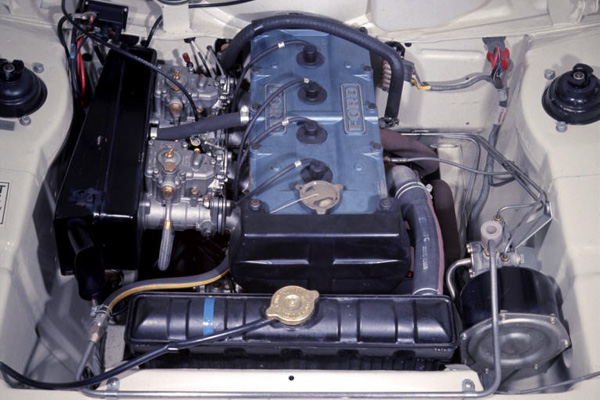
Escort Mk1 1.6 L
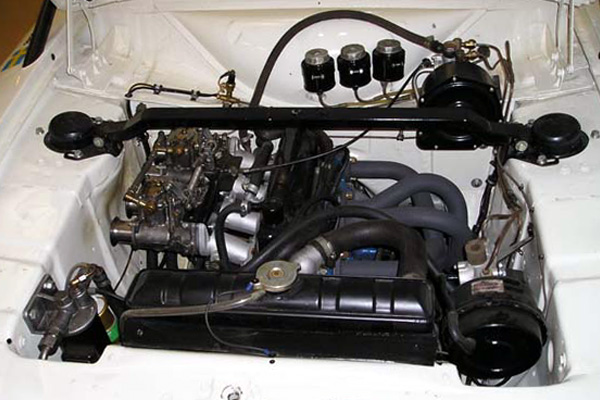
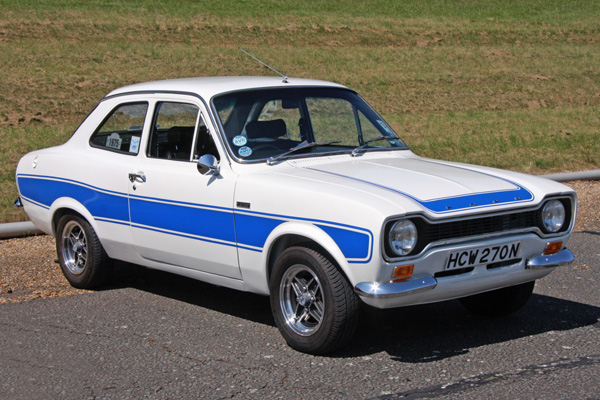
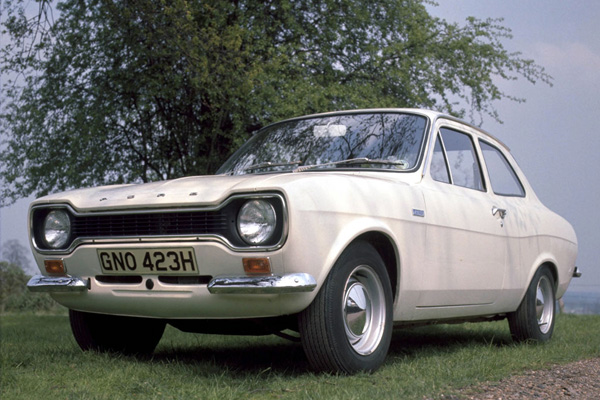
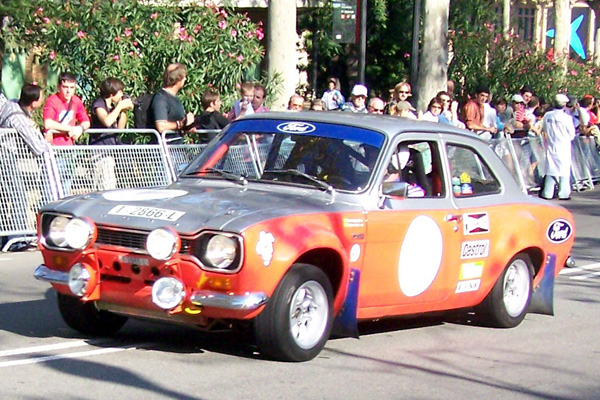
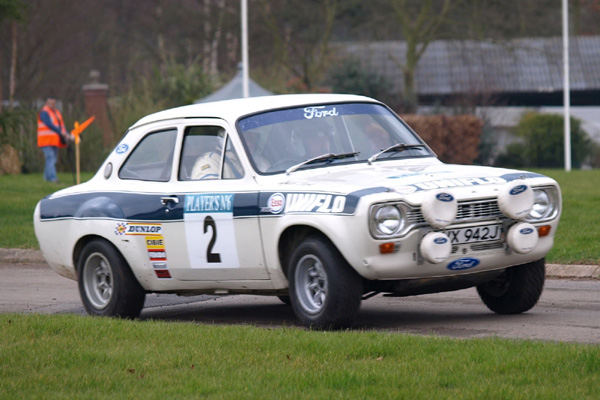
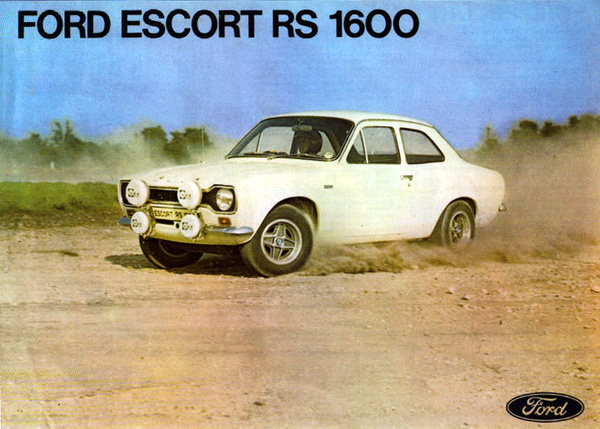
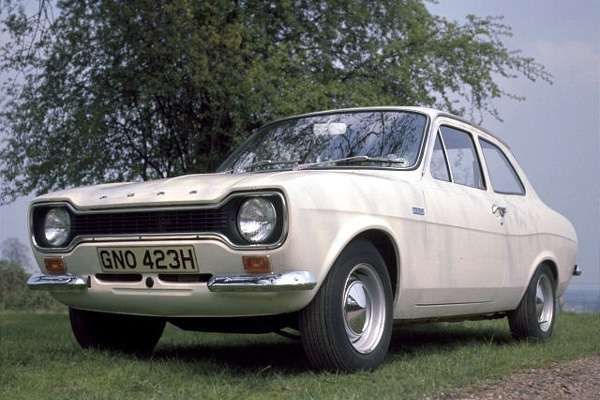
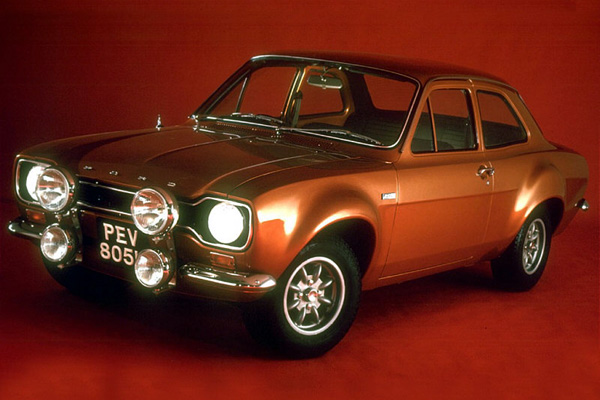
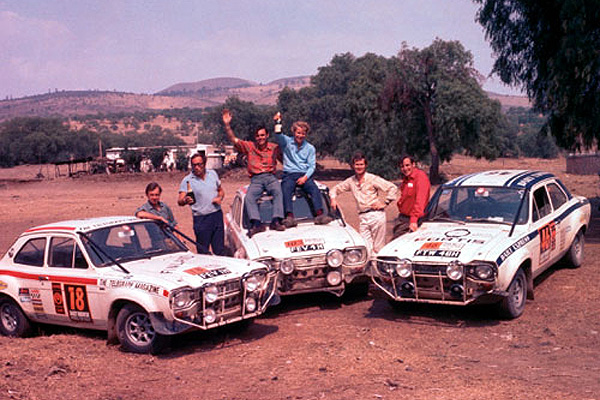
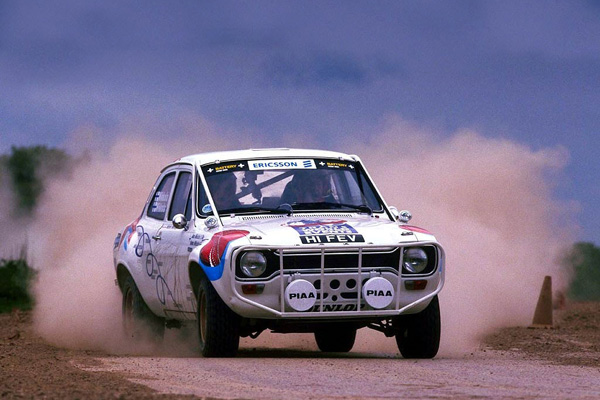
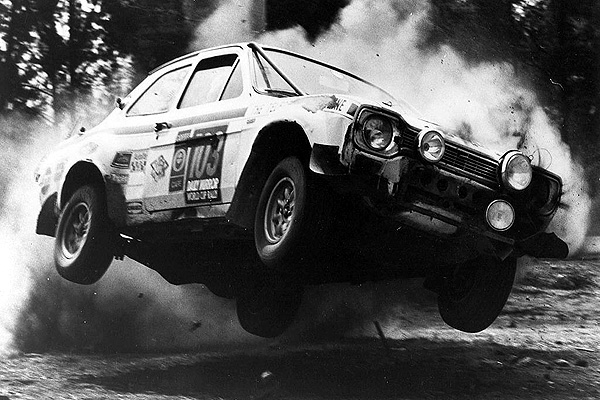
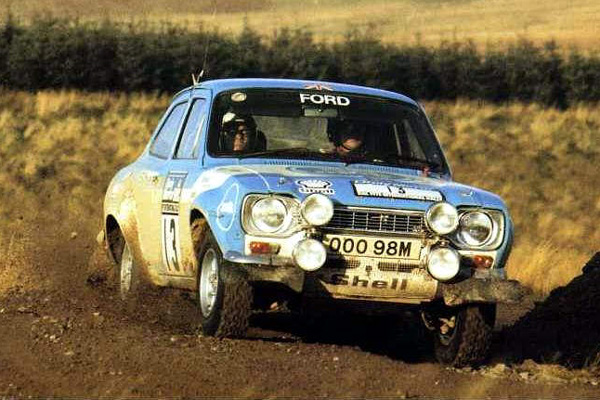
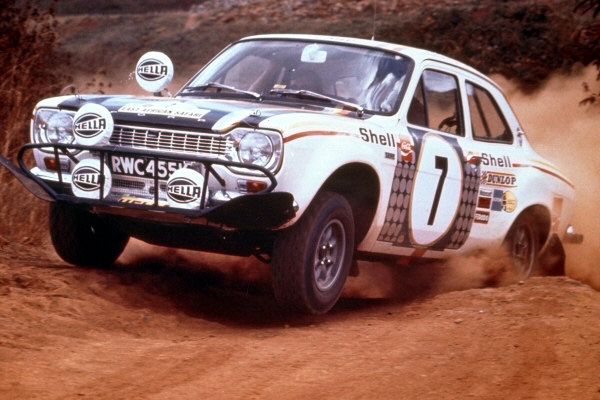
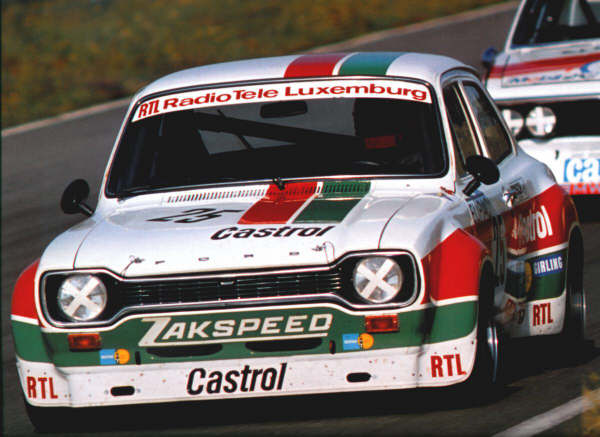
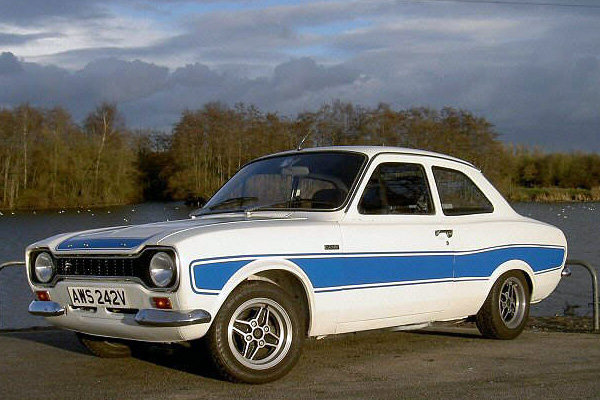
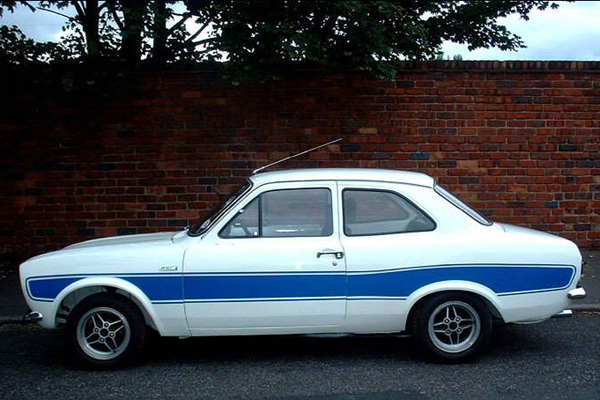
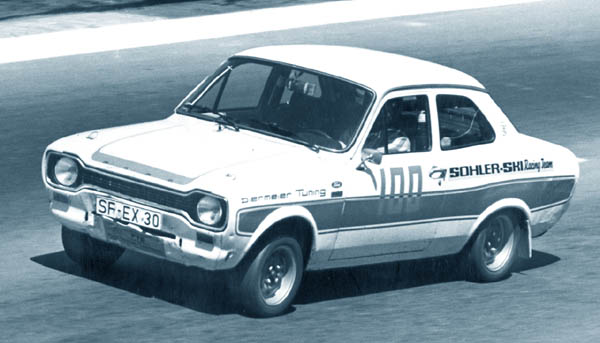
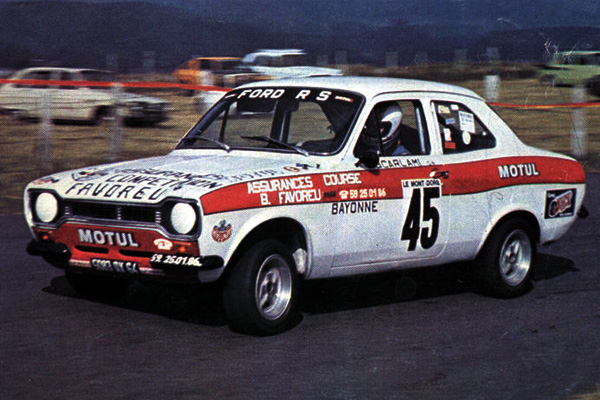
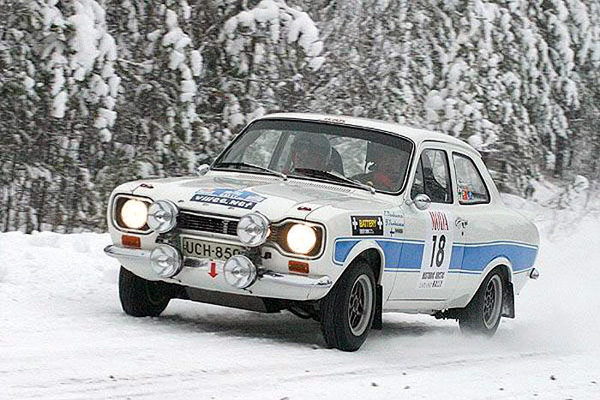
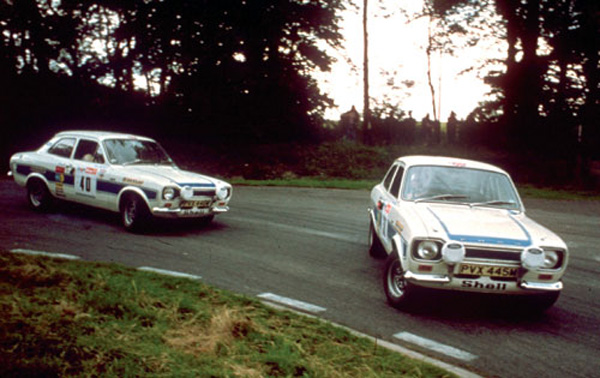
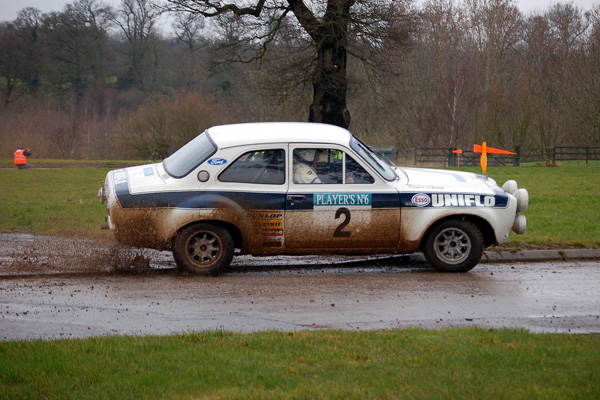
Ford Escort (Mk2) General Information
To get the full picture of the Escort Mk2, I would beg you to read the Escort Mk1 story too. I personally find the Escort Mk2 is the more fascinating and more successful car. But the Mk2 was already a complete and proven package on its debut and the Mk1 story explains what lead to this situation.The MkII Escort RS1800 took straight over from the MkI Escort RS1600. And it had very much the same spirit: It was a dead simple car which made it easy and fairly cheap to service, its handling was extremely forgiving and it could take reliably whatever you dared to throw at it. It is hard to imagine this at nowaday's technology standards, but it was exactly this simplicity and easy handling and running of the Escort RS that made it so unbelievably successful.
There are so many examples to show how brilliant the Escort RS1800 was. In 1979 the Escort RS1800 gave Ford its best season ever, winning both WRC titles. Then Ford quit to work on a new car. But two years after Ford's withdrawal, Ari Vatanen became drivers WRChampion using a private Escort RS1800! The Escort RS1800 won 17 WRC events, it was the most successful rally car of the late 1970s and just as another testimony of the spirit behind it, MkI & MkII Escorts together have won the Lombard RAC Rally no less than 8 years in succession! As long as there was no turbo and no 4x4 the Escort RS was simply THE rally car to have.
Technically the Escort RS1800 was similar to the last RS1600. Of course the RS1600 had in its latest versions a 2000cc 16v engine and carried only the RS1600 name for the tradition. There also was already an Escort RS2000 road car. So don't be confused by the RS1800 name as this was only to identify the new MkII body shell on rally versions.
As well there were never really different evolutions of the RS1800 as such. Ford however did play with a selection of solutions, most of them at random and as one offs. So were i.e. the cars "KHK 982N" & "KHK 983N" turned into a special asphalt version with the typical round wheel arches being replaced by wider, bulkier "Quattro style" ones. These were the only two cars ever having this type of wheel arches and they were used in San Remo 75 and Monte Carlo 76 by Timo Makinen and Roger Clark. Another example is "VHK 47S" & "VHK 74S", these were the only works RS1800 ever fitted with an injection system rather than the twin carbs. They were used by Hannu Mikkola and Bjorn Waldegaard in Monte Carlo 1979 and although these cars had improved the power to 272BHP, by Sweden 1979 the Ford works team returned to the traditional layout. Please read also the blah under the "asphalt" version.
Escort Mk2 RS1800 BDA
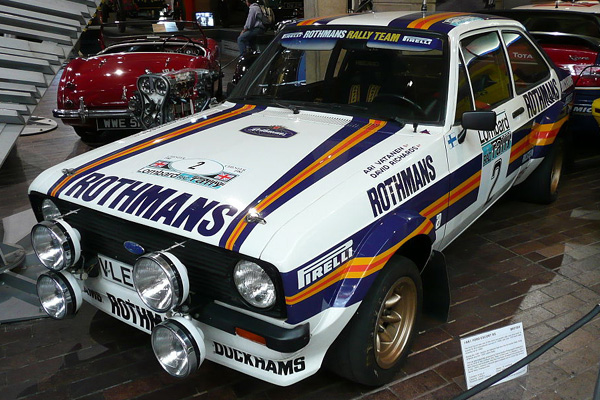
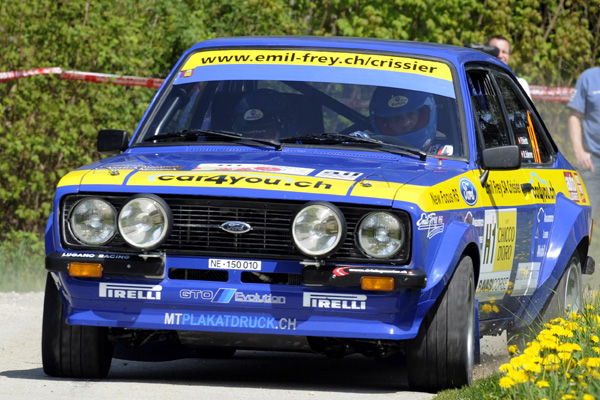
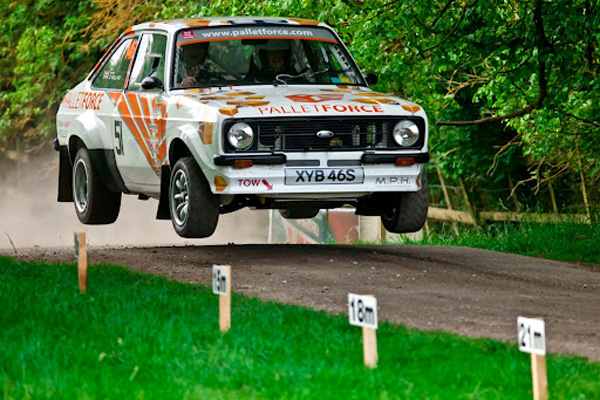
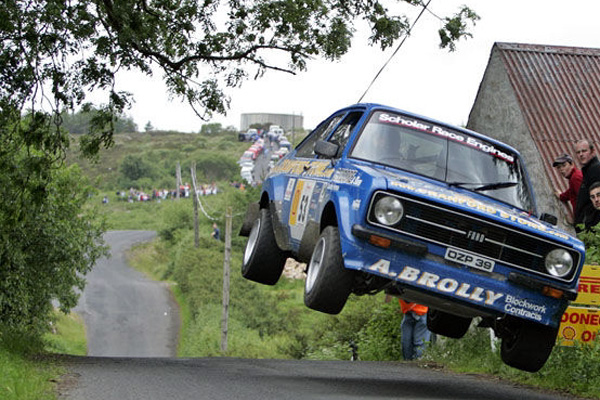
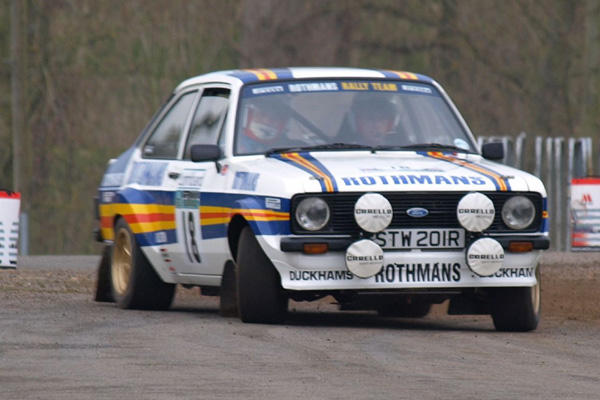
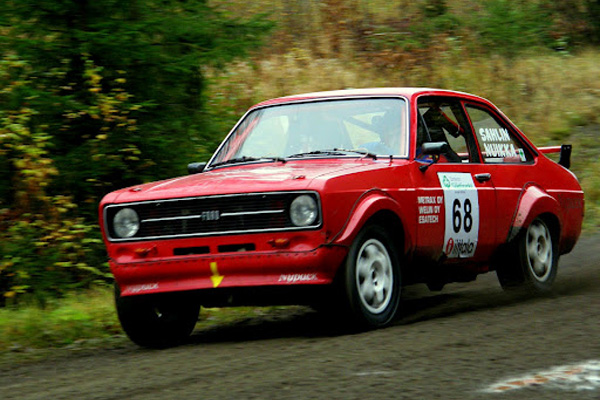
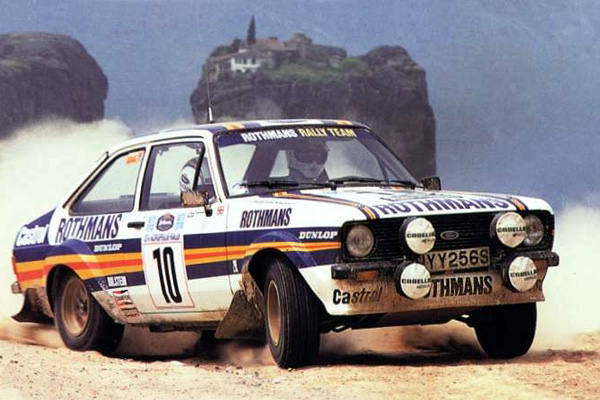
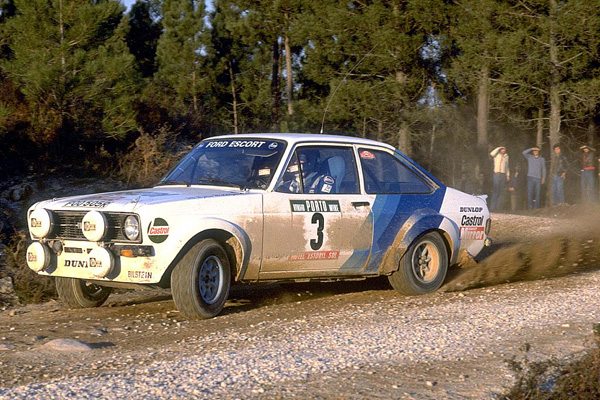
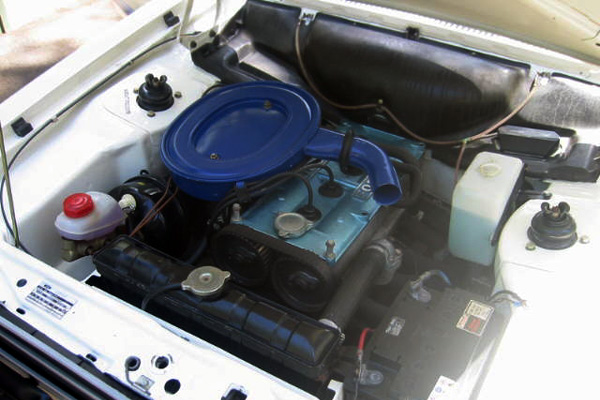
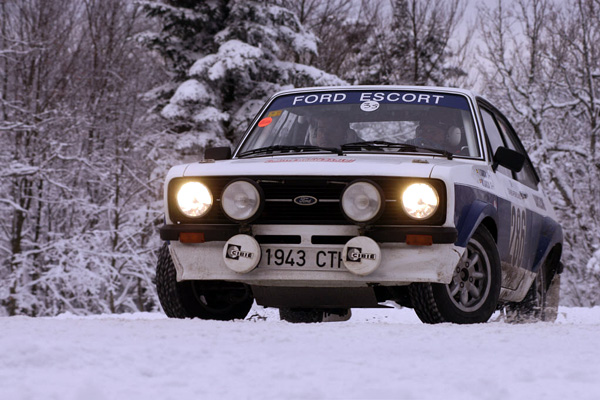
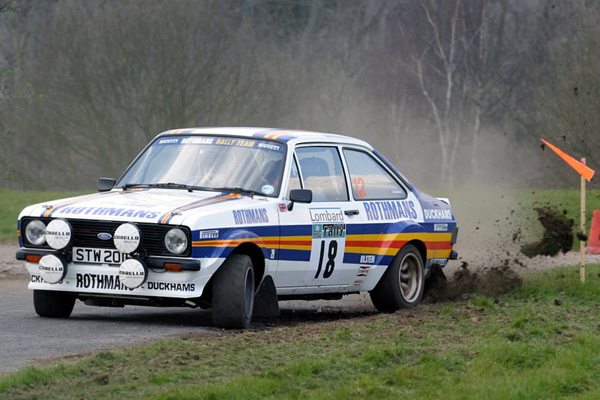
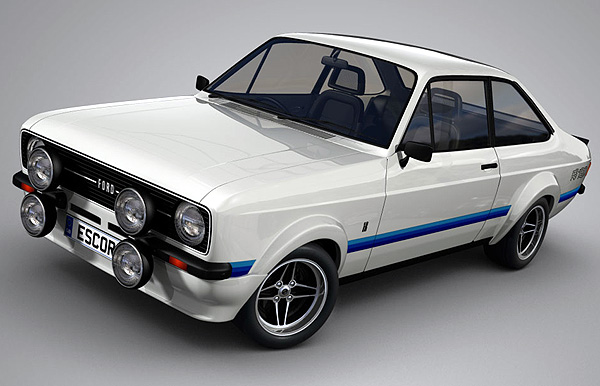
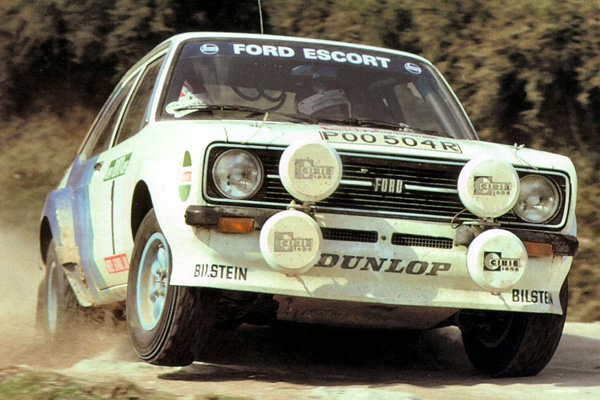
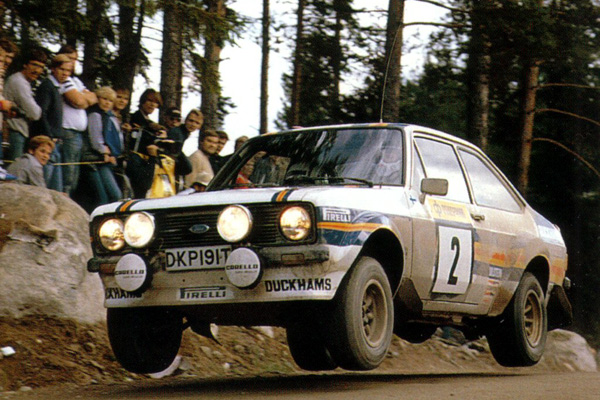
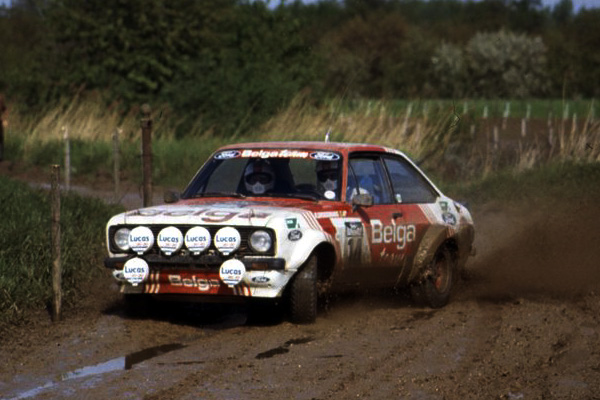
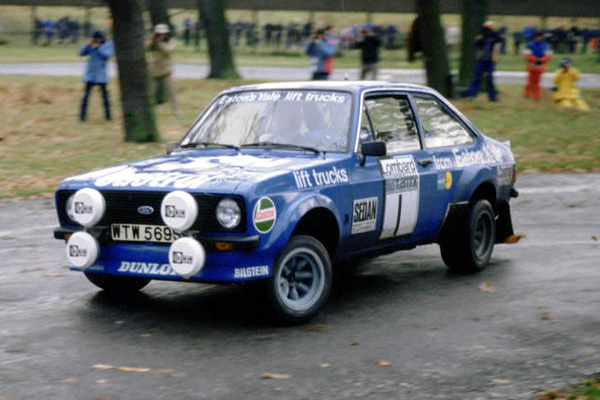
Escort Mk2 RS1800 BDA asphalt
Escort Mk2 RS2000
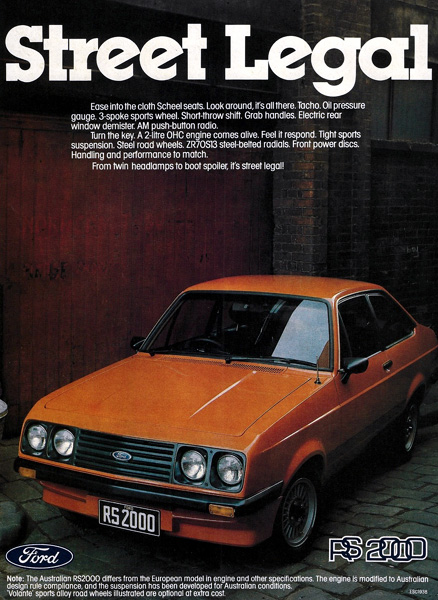
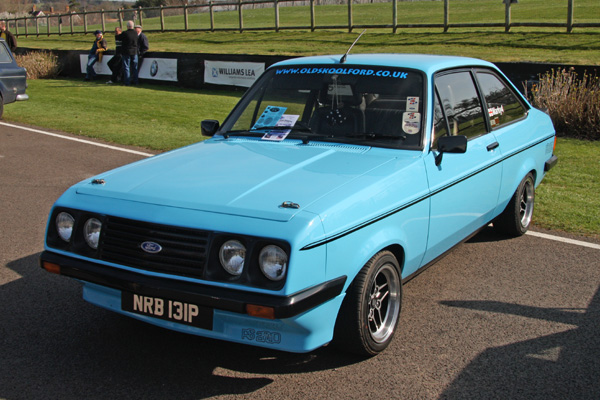
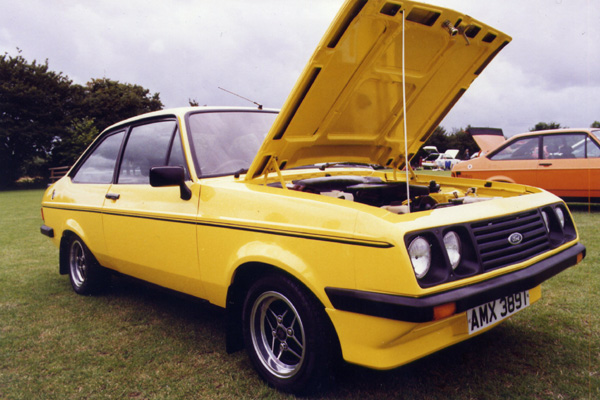
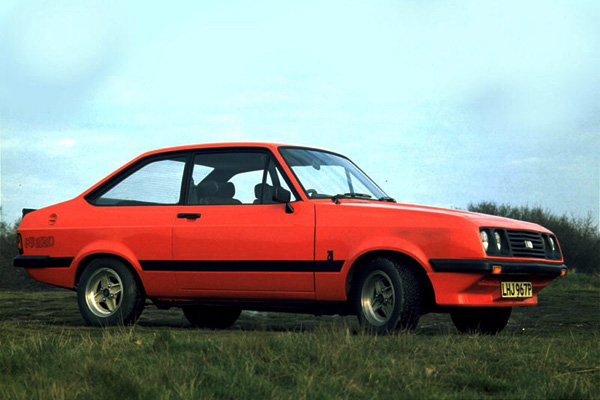
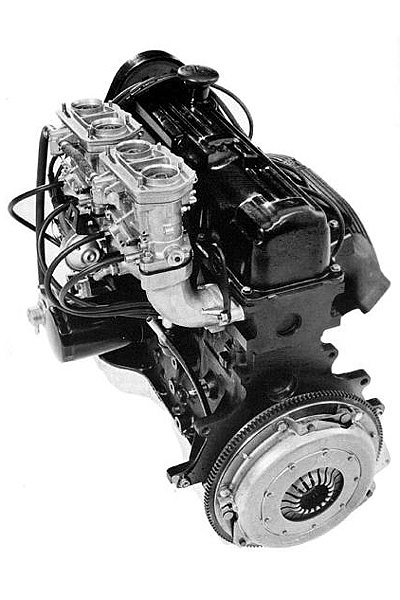
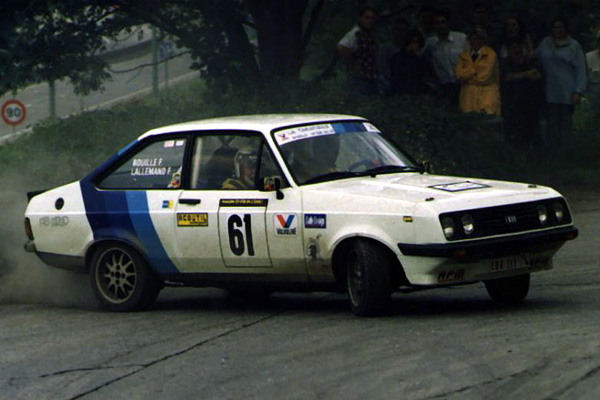
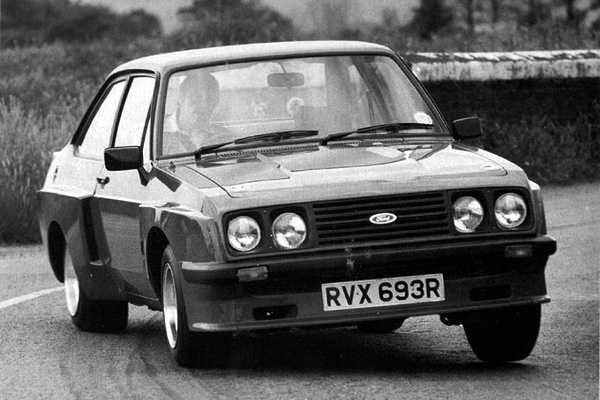
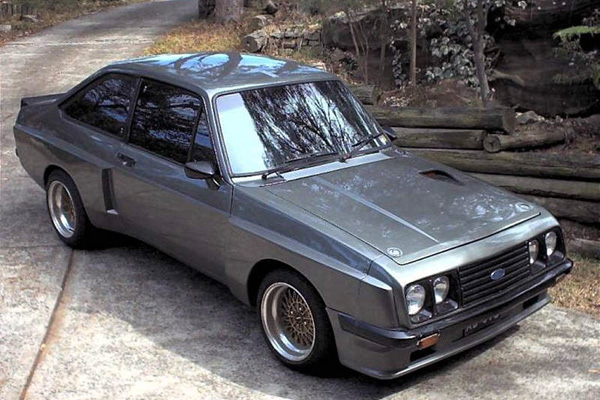
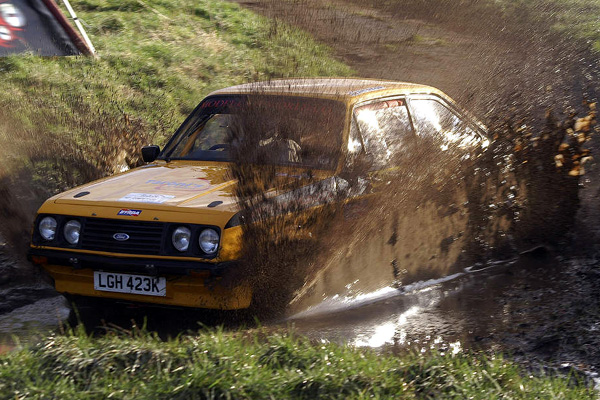
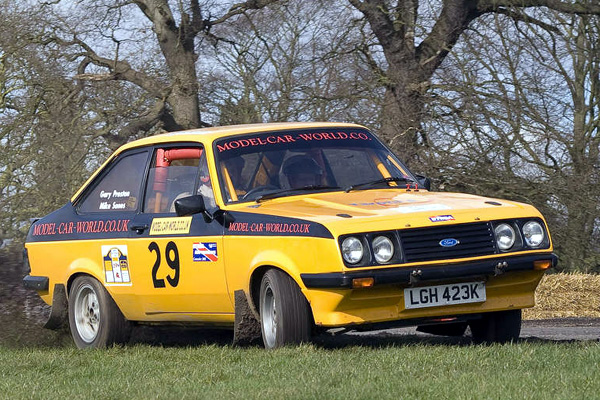
Fiesta Mk1 S1600
Cortina Mk4 3000
Escort Mk3 XR3i
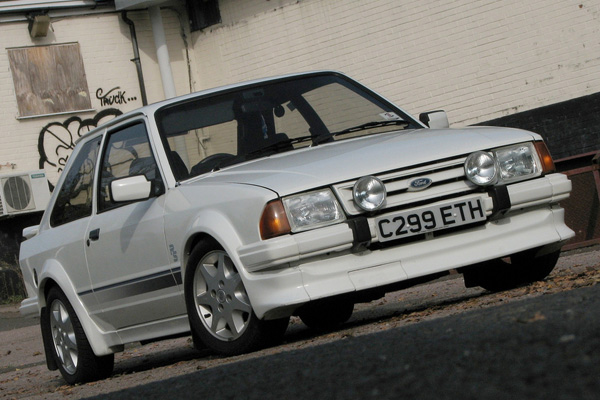
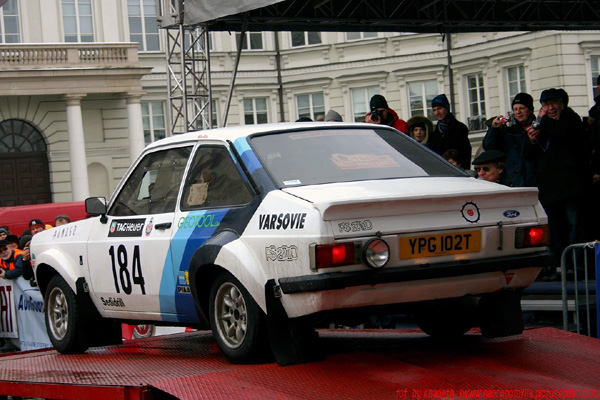
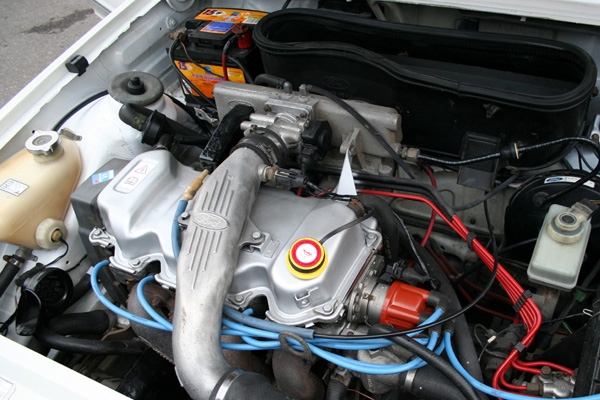

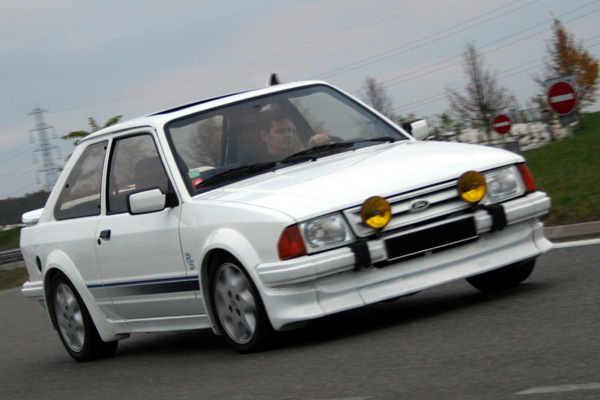
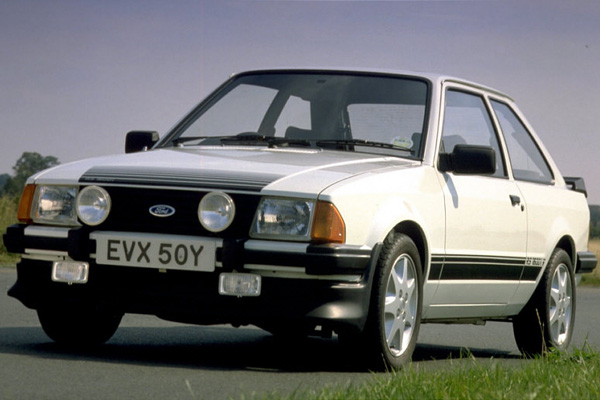
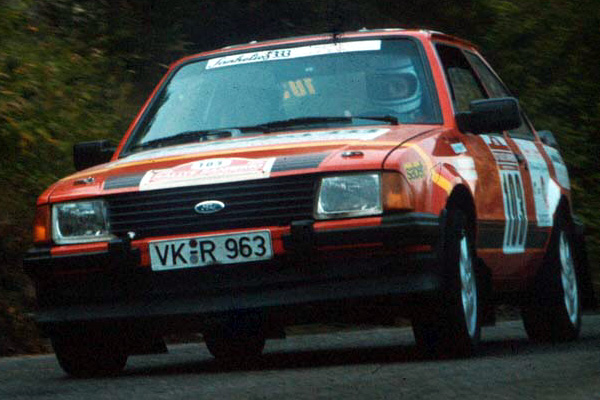
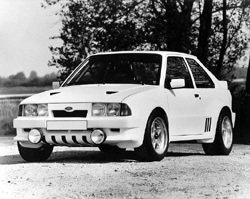
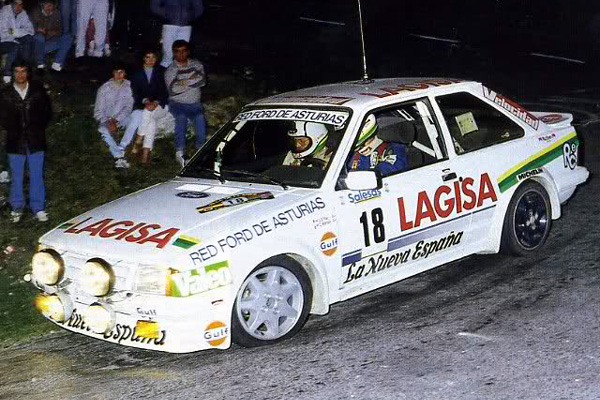
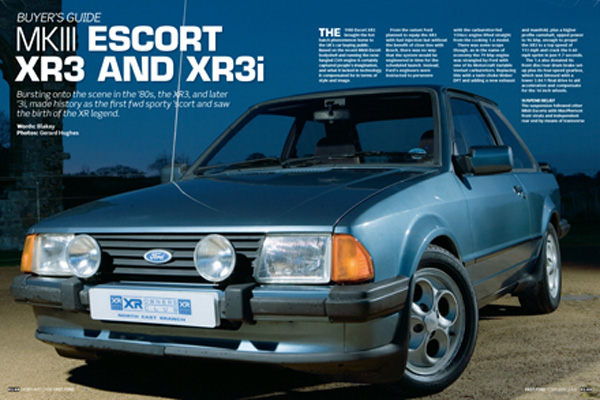
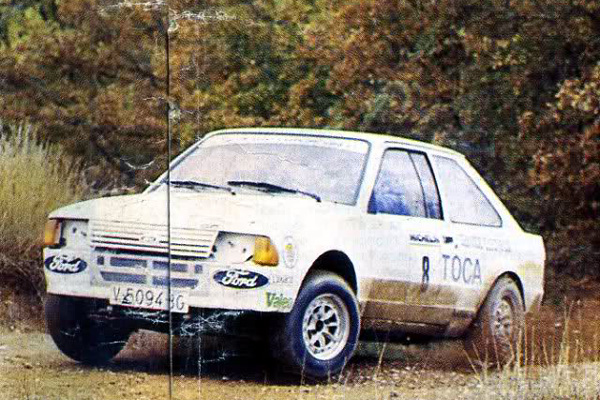
Escort Mk3 RS1600i
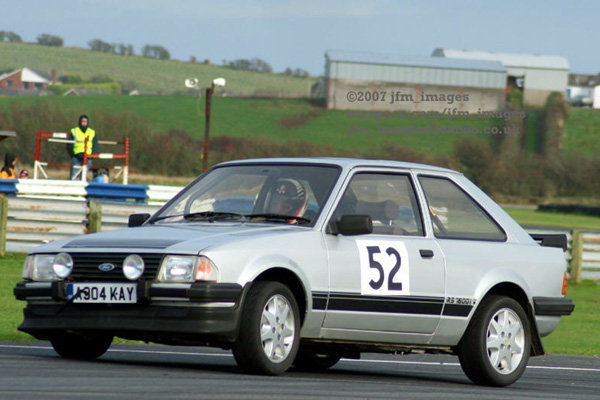
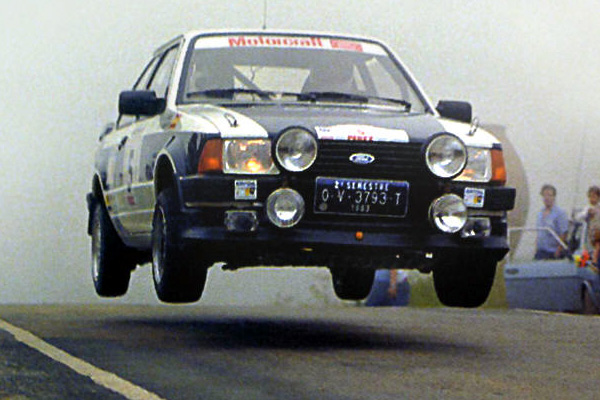
Escort Mk3 RS Turbo
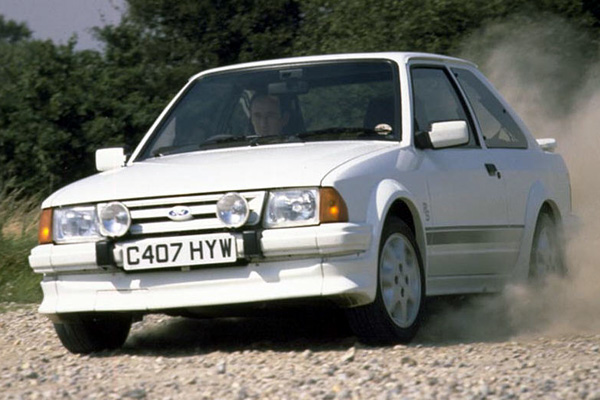
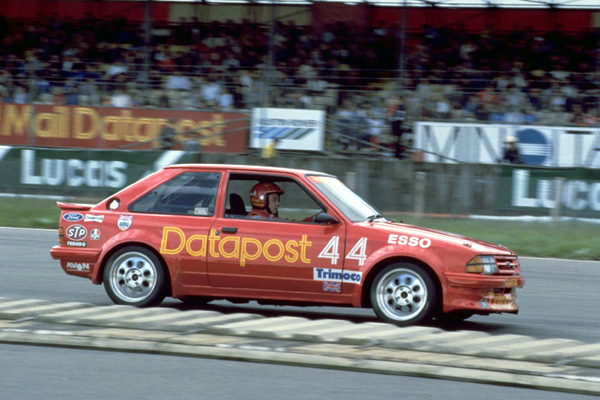
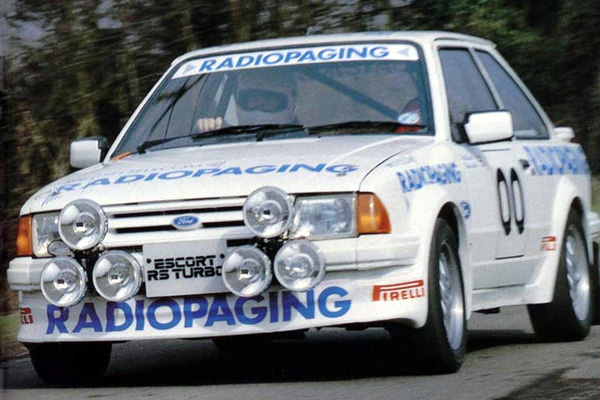
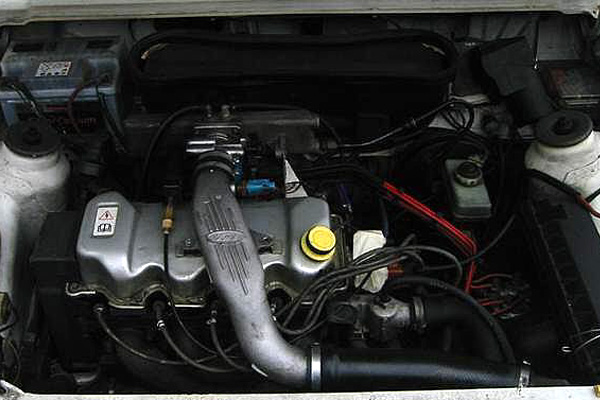
Escort Mk3 RS1700T BDT
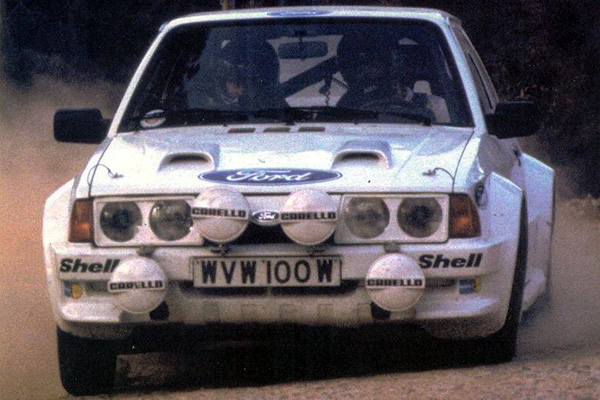
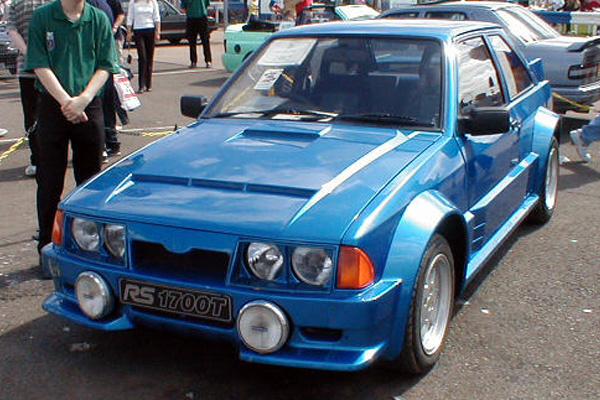
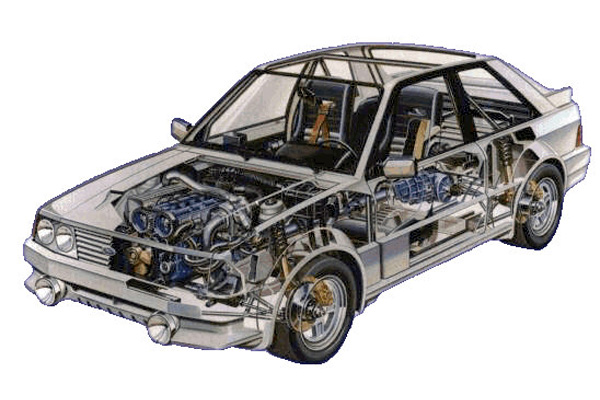
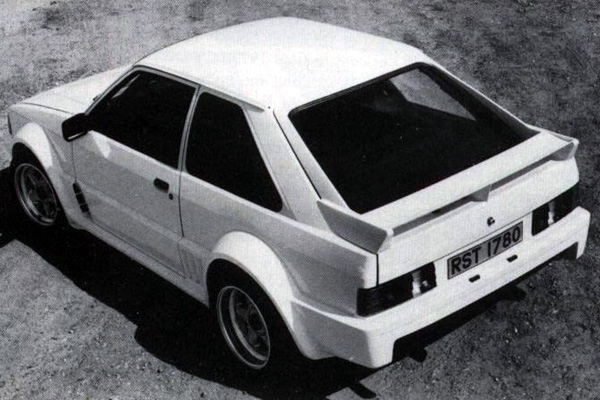
Escort Mk3 RS1700T Hart
RS200
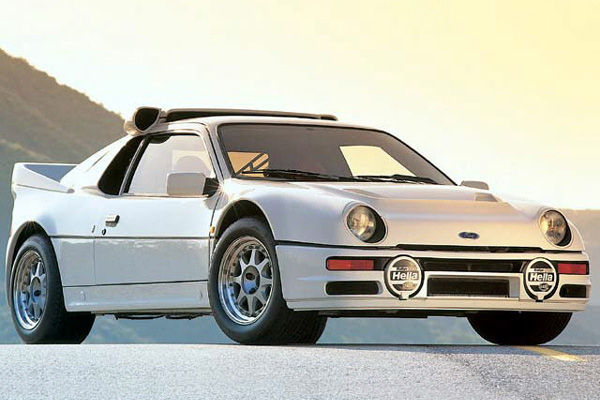
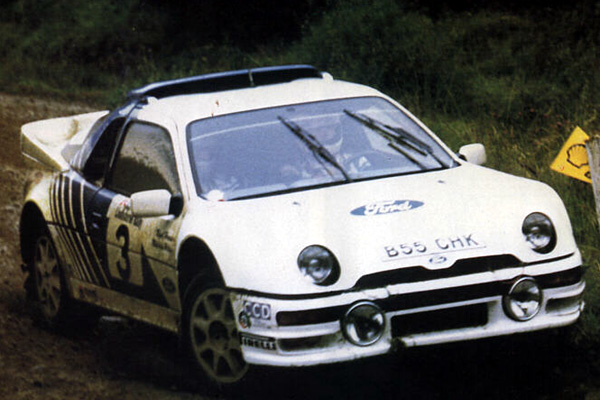
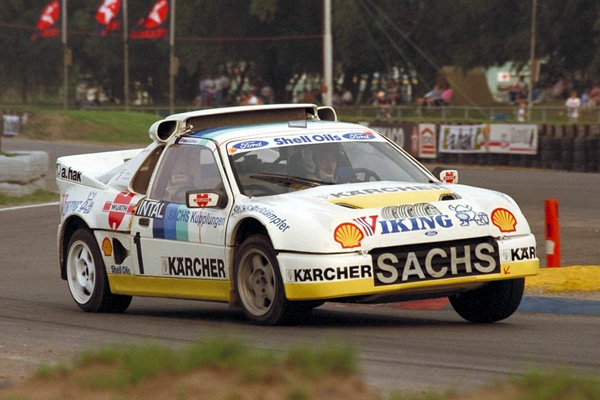
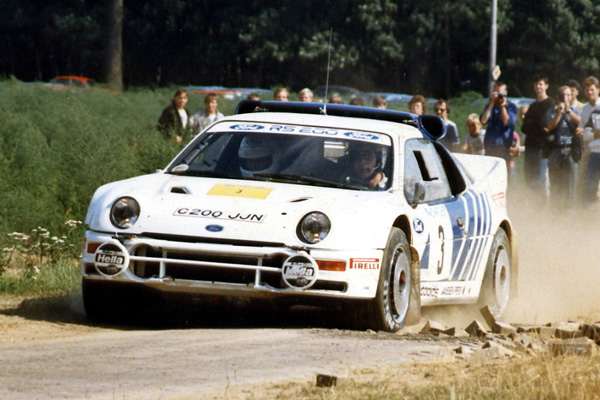
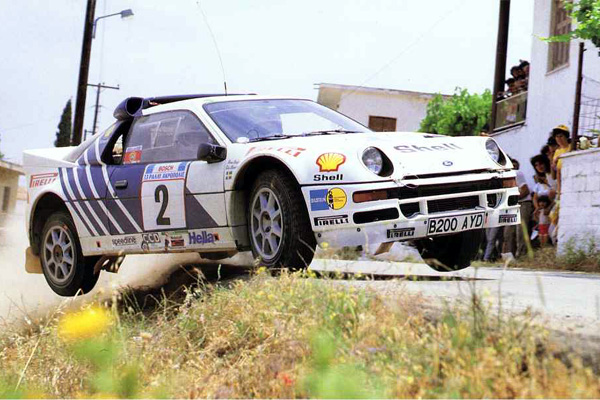
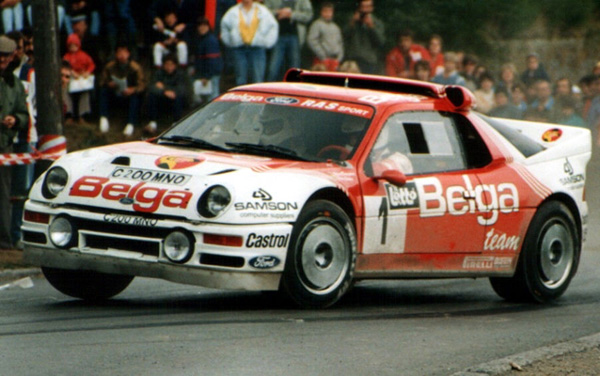
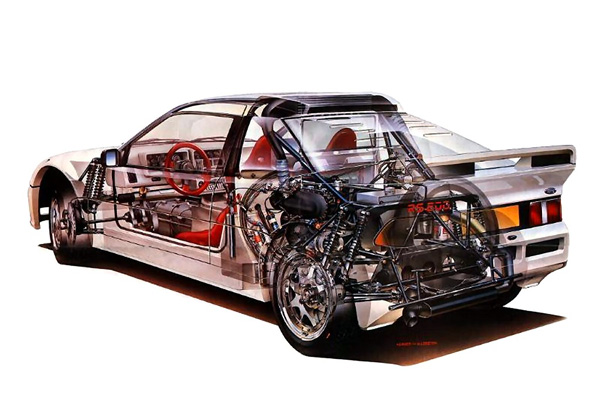
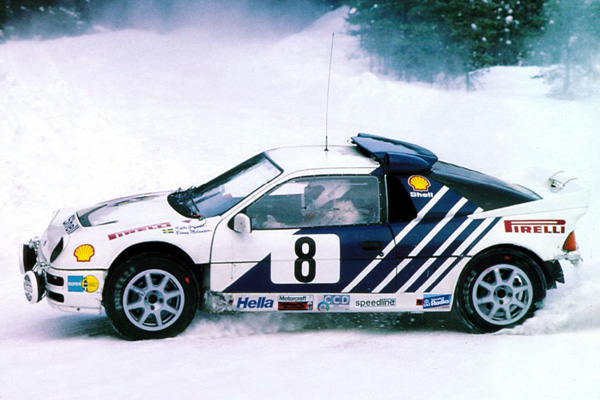
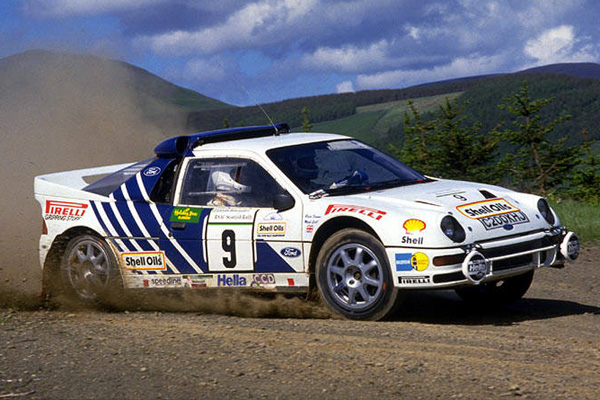
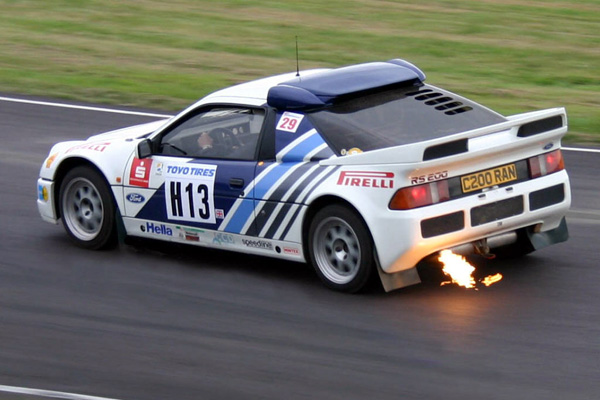
Sierra Mk1 XR4x4
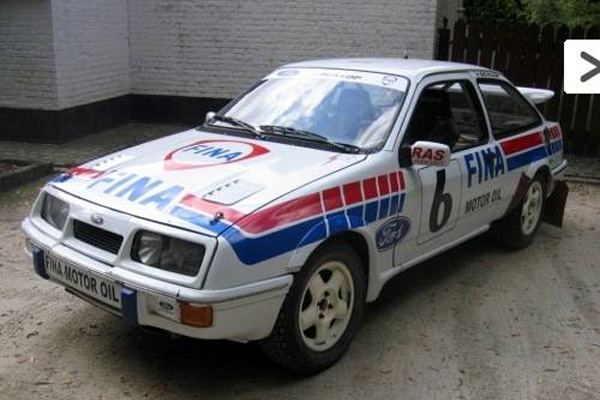
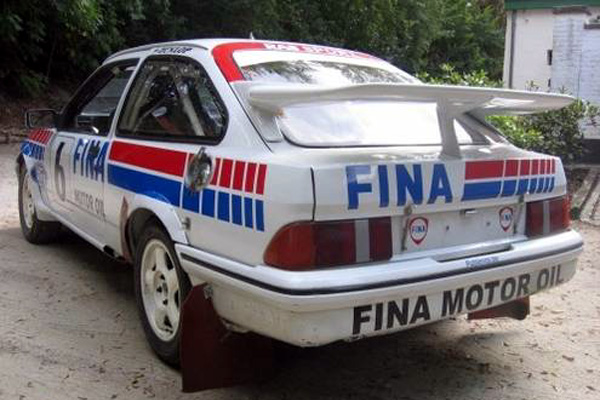
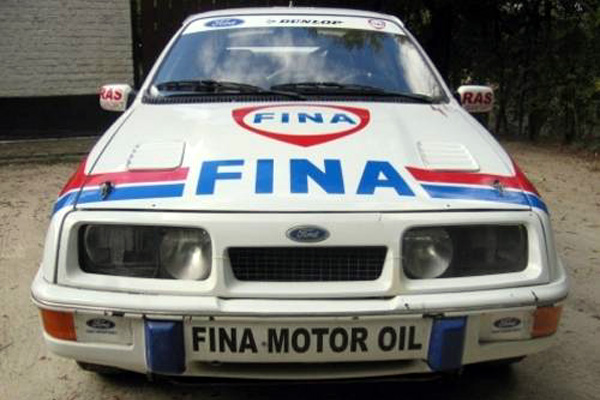
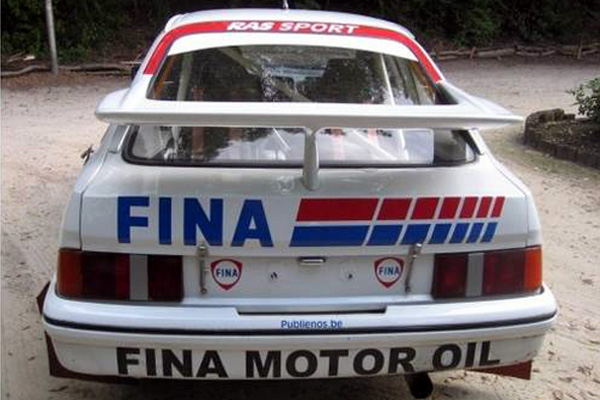
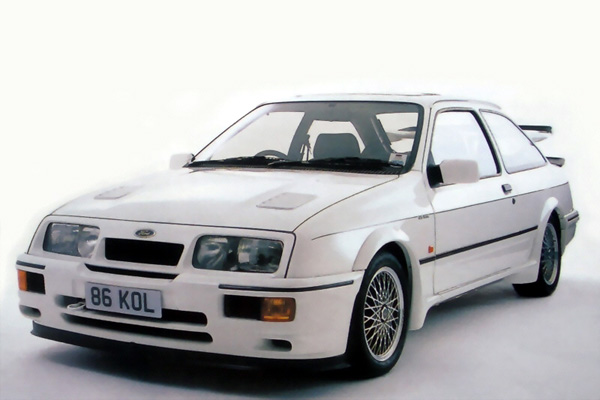
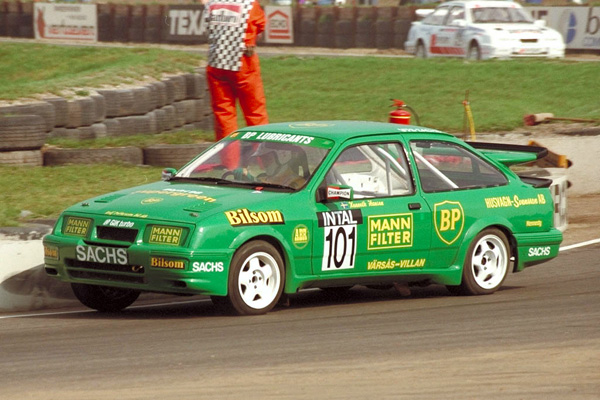
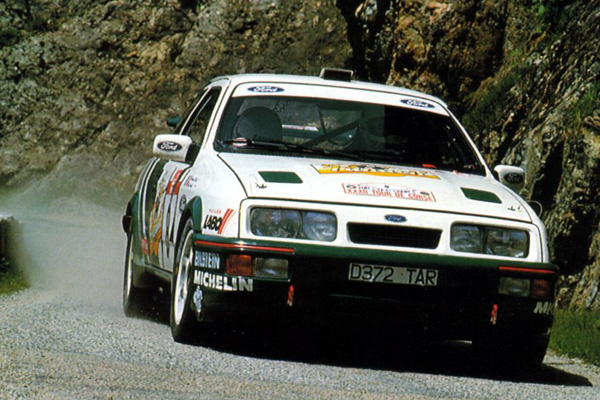
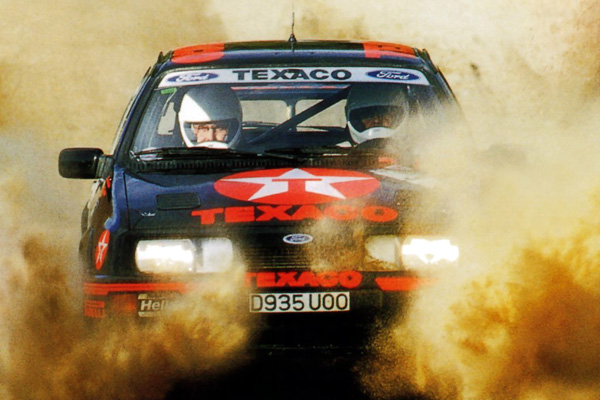
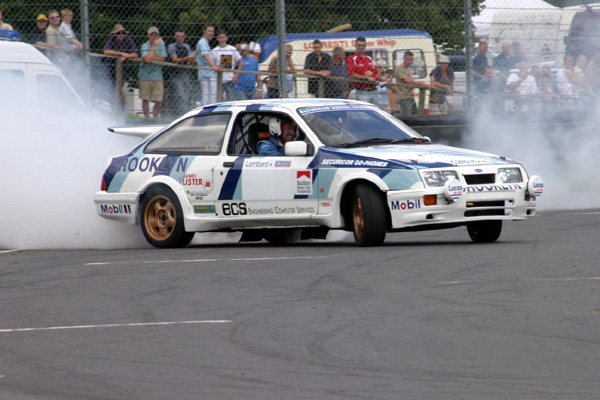
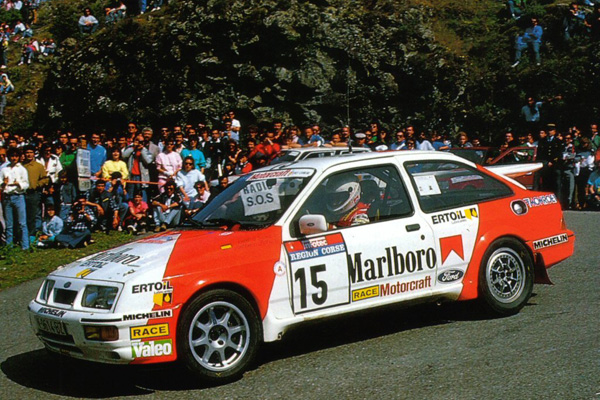
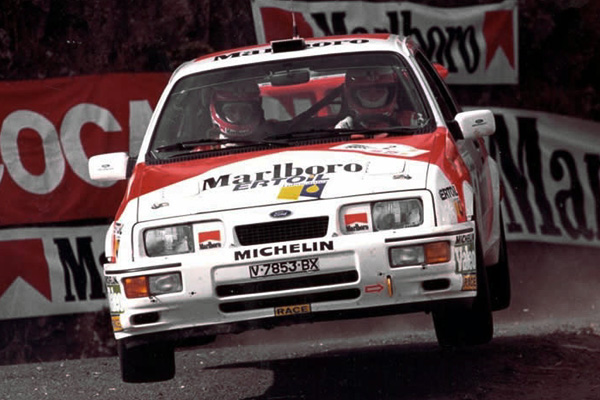
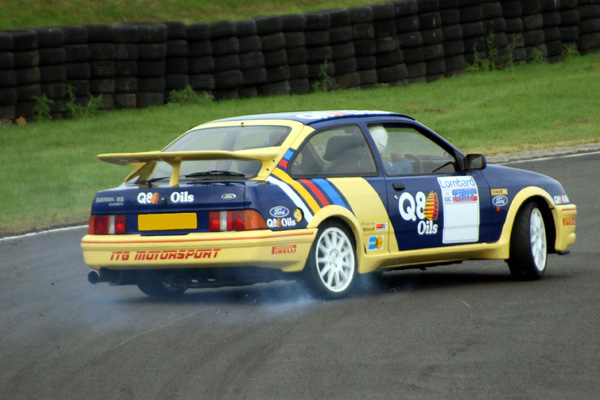
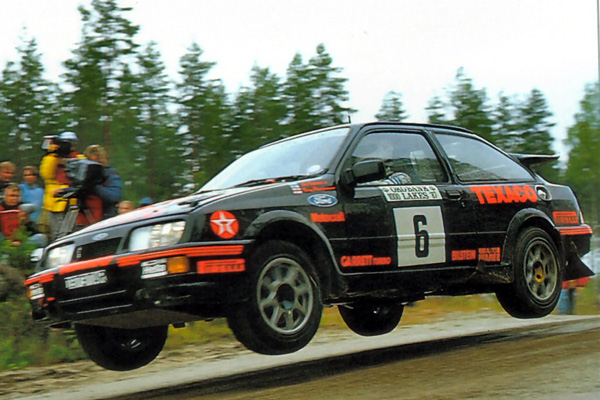
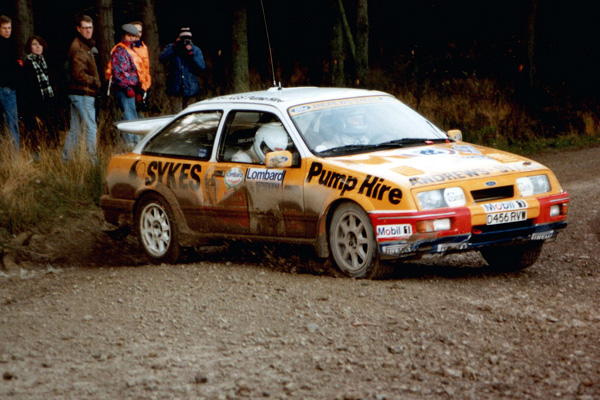
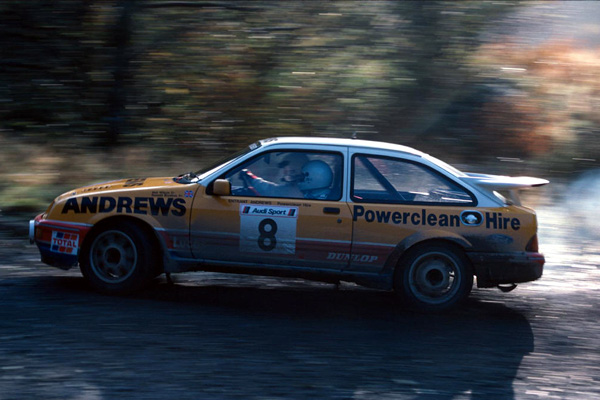
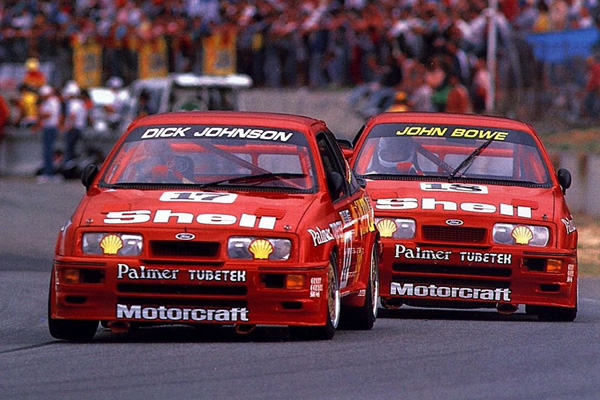
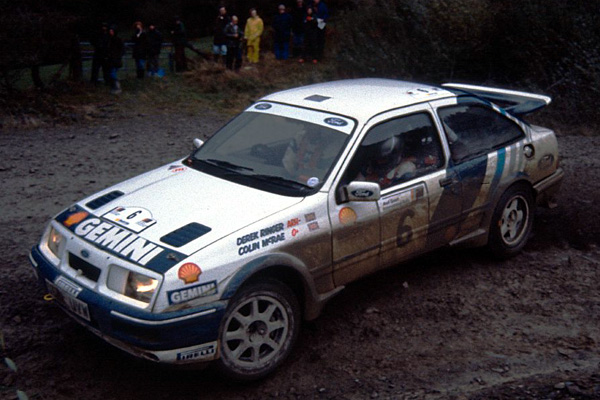
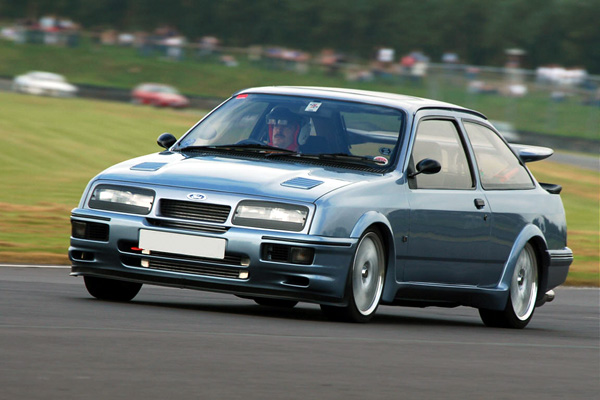
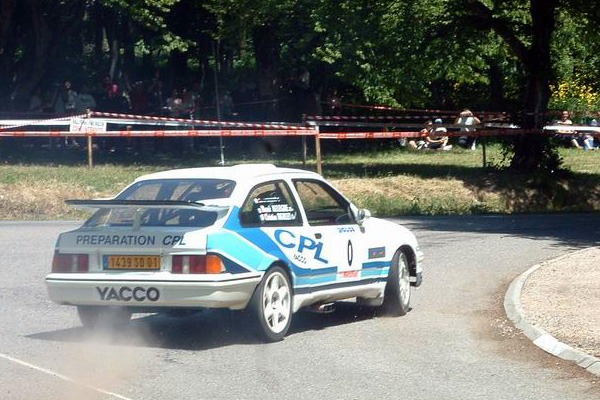
Sierra Mk1 Cosworth
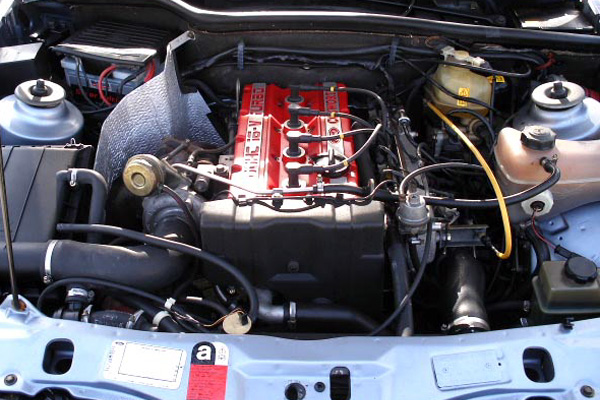
Sapphire Mk1 Cosworth
Sapphire Mk1 Cosworth 4x4
Escort Mk5 RS Cosworth
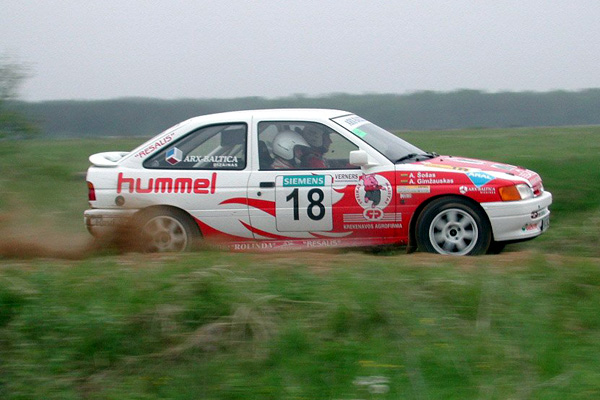
Escort Mk5 RS2000
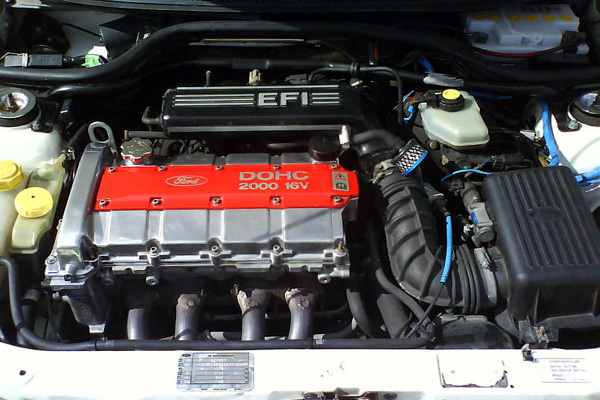
Escort Mk5 WRC
Escort Mk5 RS2000 Maxi
